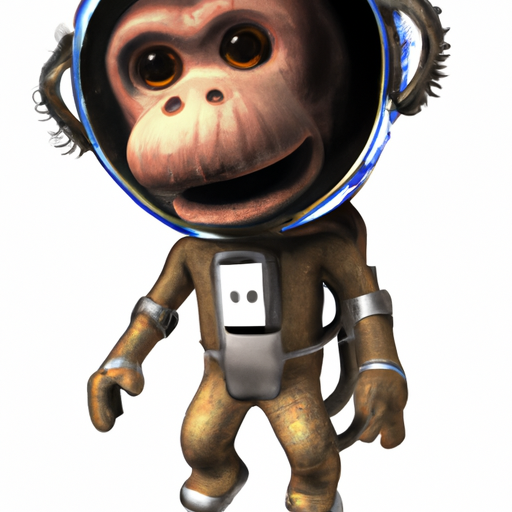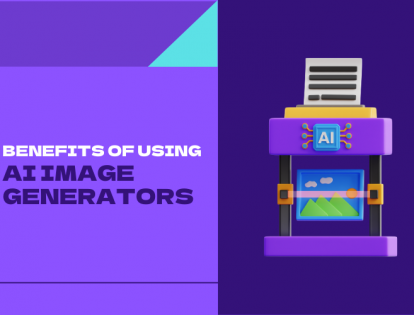In a world where visuals hold the key to captivating audiences, the demand for stunning and eye-catching content has never been higher. And now, there’s a groundbreaking ally to help you generate visual content with text prompts similar to ChatGPT prompts – these are AI image generators.
AI text-to-image generators provide an innovative way for marketers to quickly and easily create digital art and images for their blogs, social media content, web pages, or anything else. In this article, we’ll explore the various benefits and also some tips for using AI image generators for visual content creation.
What are AI image generators?
Driven by artificial intelligence (AI), AI image generators are sophisticated tools that have the capacity to autonomously produce AI-powered visual stories. An AI image generator employs artificial neural networks (ANN), an advanced machine learning algorithm, to create unique AI photos. When you input a text description/prompt, the tool interprets it and generates a photo, art, or image that accurately reflects what the prompt described.
With this tool, you can obtain AI generated images for almost anything and everything. For instance, if your prompt is – “A monkey in a spacesuit”, you can get an AI-generated image that looks something like this –

AI image generated using Narrato AI Images
Examples of AI Image Generators
- Narrato AI Images: Narrato – The AI Content Workspace offers AI Images, an Ai image generation tool using which you can create your very own AI art and images with a simple text prompt. This tool comes with a variety of art style options and high-speed image production capabilities and can be easily used by anyone, even without any technical expertise.
- Midjourney: Midjourney is a bot integrated into a Discord server. To use it, just join a Discord server and type /imagine followed by your AI image prompts. The tool is capable of providing predictable image outputs, with some degree of randomness thrown in. The one major drawback of this tool is that it can be a little overwhelming for newbies to use.
- ImgCreator: This AI image generator does both – image-to-image and text-to-image generation. It offers customization options, built-in photo editing, Background AI, and other features.
There are many more AI image generators to be found online, like Nightcafe, Stable Diffusion, Dall-E 2 by OpenAI, Bing Image Creator, Deep Dream GeneratorSome, and more. Some of these are paid, while others are completely free. Make sure you choose one that aligns with your creative goals, workflow, and budget, empowering you to unlock the full potential of AI-assisted visual content creation.
Benefits of using AI image generators
AI text-to-image generators are powerful AI tools that offer many benefits –
- Save time and effort: They can quickly create detailed and realistic images in a fraction of the time compared to traditional image creation
- Cost-effective: AI image generators provide a more cost-efficient solution than manually creating images from scratch or searching through stock images. It helps save both time and money.
- Better visual content: They allow users to generate images that accurately capture the desired emotion, style, and design.
- Offers customization: AI image generators can offer customization options to create images tailored to your needs.
- High-quality images: Advanced AI image generators can produce images of high quality that are visually pleasing and can be used for professional-grade projects.
- They automate the process of optimizing images for various platforms, including web, mobile, and print.
Tips for using AI Image Generators
When using these AI image generators, it’s important to remember a few key tips.
- Formulate a basic concept for the image: To provide the tool with the right text prompt, it is essential to establish a broad concept for the AI image. Determine the subject you wish to focus on, and the overall tone want the image to convey.
- Learn nuances of prompt engineering: Crafting a good prompt is key to ensuring the quality and accuracy of AI-generated images. Make sure it contains at least 3 words, a verb, a noun, and an adjective. Use ‘in style of’ prompts to mimic popular artworks. Specify the image quality and the color palette that you want.
- Learn jargon words: If you want to create quality AI images, it’s important to use the right language. Check out the jargon words used in art, graphic design, and photography – this will give you the most accurate prompts for your AI image generator.
- Repetition: If you’re not satisfied with the output of your AI image generator on the first go, don’t sweat it – keep on trying! With repetition, the AI will become more familiar with the concept you’re trying to convey.
- Refine images: Once you’ve created AI images, you can use photo editing tools like Luminar, Adobe Photoshop, and GIMP to boost image quality.
Wrapping Up
AI image generators are a great tool for marketers to leverage to create engaging visuals quickly and efficiently. By understanding the capabilities of AI image generators and following the useful tips laid out in this blog post, marketers can effectively maximize the potential of this technology to create stunning visuals for their brand.
